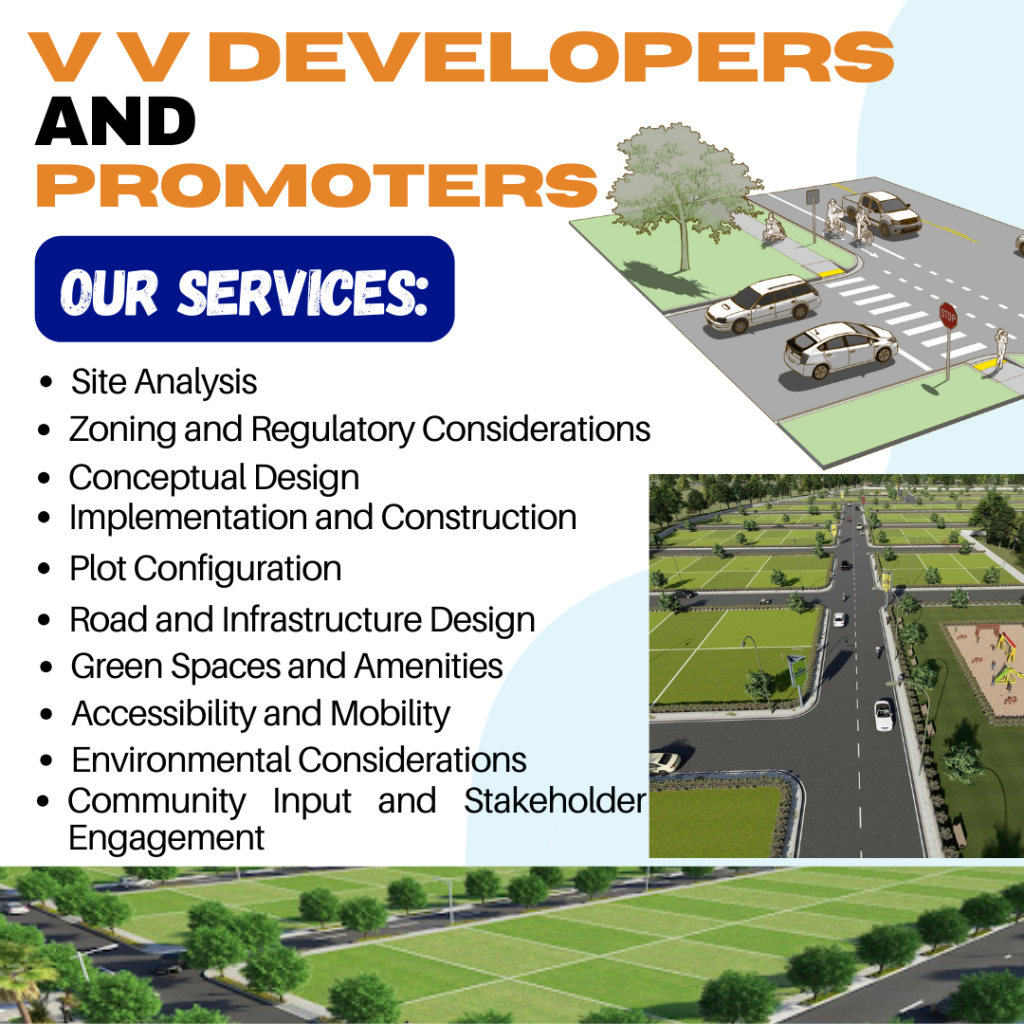Site Analysis

Before any planning begins, it’s essential to conduct a thorough analysis of the site. This includes assessing factors such as topography, soil conditions, drainage patterns, vegetation, existing infrastructure, and regulatory requirements.
Zoning and Regulatory Considerations

Developers must understand local zoning regulations and land use ordinances that dictate how the land can be developed. This includes setbacks, building height restrictions, density requirements, and other zoning parameters.
Conceptual Design

Based on the site analysis and regulatory requirements, designers create a conceptual layout for the plots. This involves determining the location and orientation of roads, sidewalks, utilities, and individual parcels within the site.
Plot Configuration

The layout must optimize land use while considering factors like access, privacy, views, and natural features. Plots may be configured in various shapes and sizes to accommodate different types of development, such as single-family homes, multi-family housing, commercial lots, or industrial sites.
Road and Infrastructure Design

Roads, sidewalks, and utilities are essential components of plot layout development. Designers must plan the layout of streets to provide efficient access to each plot while ensuring connectivity with surrounding roads and infrastructure. Utilities such as water, sewage, electricity, and telecommunications also need to be integrated into the layout.
Green Spaces and Amenities

Incorporating green spaces, parks, recreational areas, and amenities like playgrounds or community centers can enhance the livability and attractiveness of the development. These elements are often integrated into the plot layout to provide residents or users with access to outdoor spaces and leisure activities.
Accessibility and Mobility

Plot layouts should prioritize accessibility for pedestrians, cyclists, and vehicles. Sidewalks, bike lanes, parking areas, and public transportation infrastructure may be included to promote mobility and connectivity within the development.
Environmental Considerations

Sustainable design practices, such as stormwater management, landscaping with native vegetation, and minimizing environmental impact, are increasingly important in plot layout development. Developers may incorporate green building techniques and renewable energy solutions to reduce the project’s environmental footprint.
Community Input and Stakeholder Engagement

Depending on the scale and nature of the development, developers may seek input from the community, local stakeholders, and relevant authorities during the planning process. Engaging stakeholders early can help identify concerns, address issues, and foster community support for the project.
Implementation and Construction

Once the plot layout is finalized and approved, the development moves into the construction phase. This involves site preparation, grading, infrastructure installation, building construction, and landscaping according to the approved plans and specifications
Enquire Now

